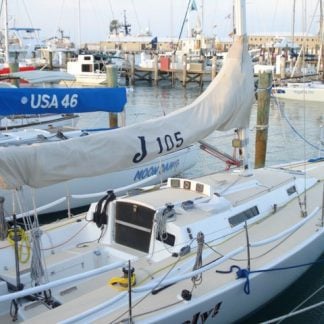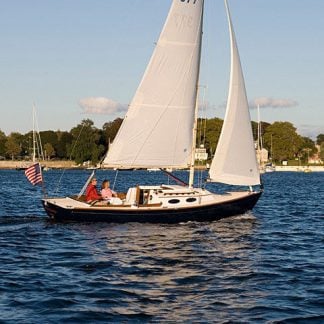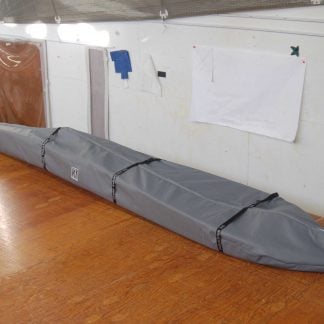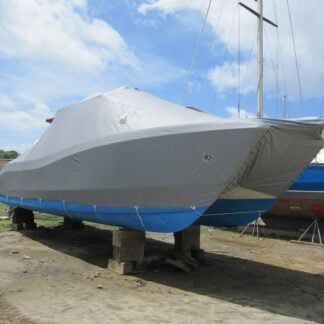JAN 31, 2025
Q: What is the best thread for sewing Marine Canvas?
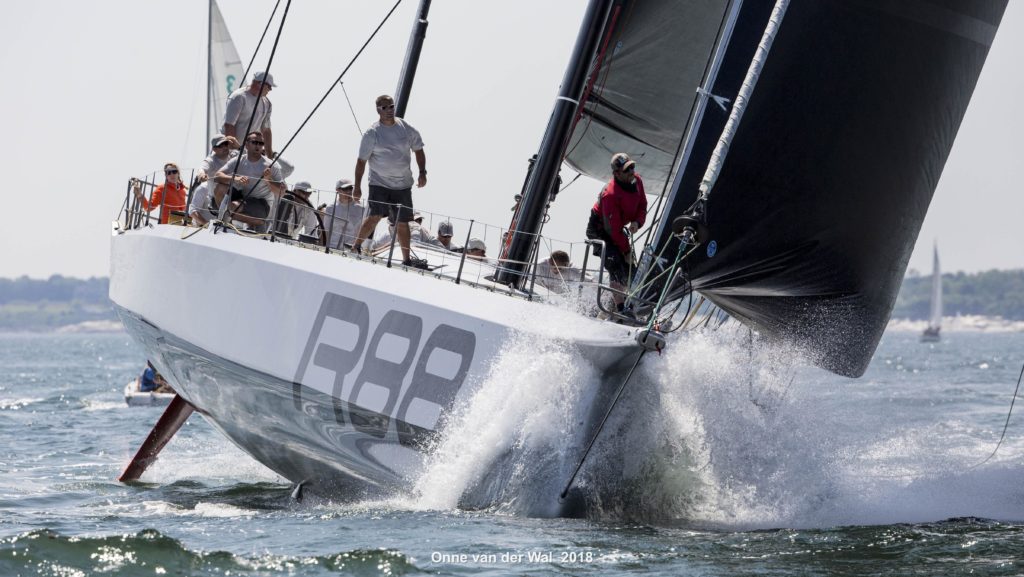
When it comes to marine canvas—whether it’s a sail cover, boat cover, dodger, or bimini—the thread you choose is just as important as the fabric itself. After all, that thread is what holds your entire investment together when the wind picks up and the saltwater splashes. But just like canvas, not all threads are created equal. So, let’s break down the different types of threads used for marine canvas and what their quality means for your boat’s gear.
Why Thread Quality Matters
First off, let’s talk about why thread matters in the first place. When you’re investing in marine canvas products, you’re looking for durability, strength, and resistance to the elements. The last thing you want is for your brand-new dodger to fall apart after one season, or for your sail cover to start unraveling in the middle of a long passage. Threads need to stand up to UV rays, saltwater, and the constant motion of a boat without deteriorating. So, choosing the right thread for the job isn’t just a nice-to-have—it’s crucial for longevity and safety.
Now that we’ve established how important thread is, let’s dive into the different types of threads commonly used for marine canvas.
1. Polyester Thread: The All-Around Workhorse
What it is: Polyester thread is the most commonly used thread for marine canvas products. It’s a synthetic fiber that’s tough, versatile, and relatively affordable.

Why it’s good: Polyester has an excellent balance of strength and resistance to UV damage. It doesn’t rot from exposure to moisture and has decent abrasion resistance, making it a popular choice for things like sail covers, boat covers, dodgers, and biminis. It also holds up well under the intense sunlight that boats are often subjected to.
Why it’s great: The main reason polyester is so popular is that it’s affordable and dependable. For most sailors, especially those on cruising boats or recreational yachts, polyester is an ideal choice. It gets the job done without breaking the bank.
When to use it: Polyester is a good all-around choice for most applications. Whether you’re making a sail cover for your cruising boat or outfitting your bimini, it’s a solid option that won’t let you down.
2. Nylon Thread: Strong, but Needs a Little TLC
What it is: Nylon is another synthetic fiber used for marine canvas, though it’s not as common as polyester in this context. It’s known for its high strength and stretchability.
Why it’s good: Nylon thread is incredibly strong and resistant to wear and tear. It can stretch under tension, which gives it a bit of flexibility when you’re dealing with products like dodgers or biminis that may need to flex with wind or wave action.
Why it’s not as great: While nylon is strong, it doesn’t handle UV rays as well as polyester. Over time, exposure to sunlight can cause the nylon to weaken and degrade, leading to premature failure. It also absorbs moisture, which can lead to mildew or mold issues.
When to use it: Nylon thread is best used in areas where stretch is important, like in some dodger seams or other parts of your canvas gear that might see more movement. Just make sure to keep it covered or treated to protect it from UV damage if it’s going to be exposed for long periods.
3. V-69, V-92, and V-138 Threads: The Heavy-Duty Crew
What they are: These are specific weight categories of polyester thread (or sometimes nylon) that indicate the thickness and strength of the thread. The numbers (like V-69 or V-92) refer to the size of the thread, with V-138 being the thickest and strongest of the three.
Why they’re good: These heavier-duty threads are perfect for high-stress areas on your canvas products, like the corners of a dodger or the seams of a boat cover. V-138 is ideal for super-heavy-duty applications like large boat covers, tarp-like applications, or where high abrasion resistance is key.
Why they’re great: If you’re looking for something that will stand up to intense weather, heavy use, or high winds, these thicker threads are your go-to. They’re more robust and can take on more tension without breaking or fraying.
When to use them: Use these heavy-duty threads for high-stress applications. If you’re sewing a large custom boat cover or working on a heavy-duty dodger, these threads will provide the strength and durability you need to ensure that the seams won’t fail under pressure.
4. Kevlar Thread: The Ultimate Strength (but Pricey)
What it is: Kevlar is a synthetic fiber famously used in bulletproof vests, and it’s now making a name for itself in the world of marine canvas. It’s incredibly strong, lightweight, and resistant to abrasions, which makes it perfect for extreme conditions.
Why it’s good: Kevlar thread is practically indestructible. It’s incredibly resistant to UV damage, doesn’t stretch, and holds up incredibly well in harsh conditions. If you’ve got a performance boat or need your canvas to withstand the most extreme elements, Kevlar is a top choice.
Why it’s not as great: There’s a reason Kevlar isn’t used in every boat’s canvas: it’s expensive and can be difficult to work with. It’s also stiff, which can make it tricky to sew, and it doesn’t have the same ease of use as polyester.
When to use it: Kevlar is the best option for high-performance boats, extreme sailing conditions, or when you absolutely need the highest quality for your sail covers or deck covers. If your boat regularly sees heavy weather or you’re racing, this is the thread you want.
5. Bonded Thread: The Thread That Lasts Longer
What it is: Bonded thread is polyester (or sometimes nylon) thread that’s been coated with a special bonding agent to increase its durability.
Why it’s good: The bonding process makes the thread stronger and more resistant to fraying and abrasion. It also helps the thread maintain its strength over time, even under UV exposure. Bonded thread also helps prevent unraveling at the ends, which is a common issue with regular threads.
Why it’s great: If you want a high-quality, durable thread that’s ready to stand up to harsh marine conditions, bonded thread is a solid choice. It’s especially great for high-stress seams and stitching that needs to hold up over many seasons of use.
When to use it: Most high-quality marine canvas products will use bonded thread. If you’re making or replacing covers, biminis, or dodgers, look for bonded polyester thread to ensure your seams stay strong and intact.
Final Thoughts
The thread you choose for your marine canvas products is more than just a minor detail—it’s a decision that directly impacts how long your gear lasts and how well it performs in harsh conditions. Whether you opt for the all-around reliability of polyester thread, the heavy-duty strength of V-138, or the extreme durability of Kevlar, each type of thread has its place. Here at Kinder Industries, we use a V-138 Polyester thread for strength and longevity with other thread options available upon request.
Ultimately, the key is understanding your specific needs. Are you in need of something affordable but durable for cruising? Polyester will do the trick. Looking for top-of-the-line, race-ready gear that needs to withstand heavy wear? Kevlar might be the way to go. Either way, investing in quality thread is the first step toward making sure your boat’s canvas stands the test of time—because no one wants to deal with a sail cover falling apart in the middle of the season!
Happy stitching!

